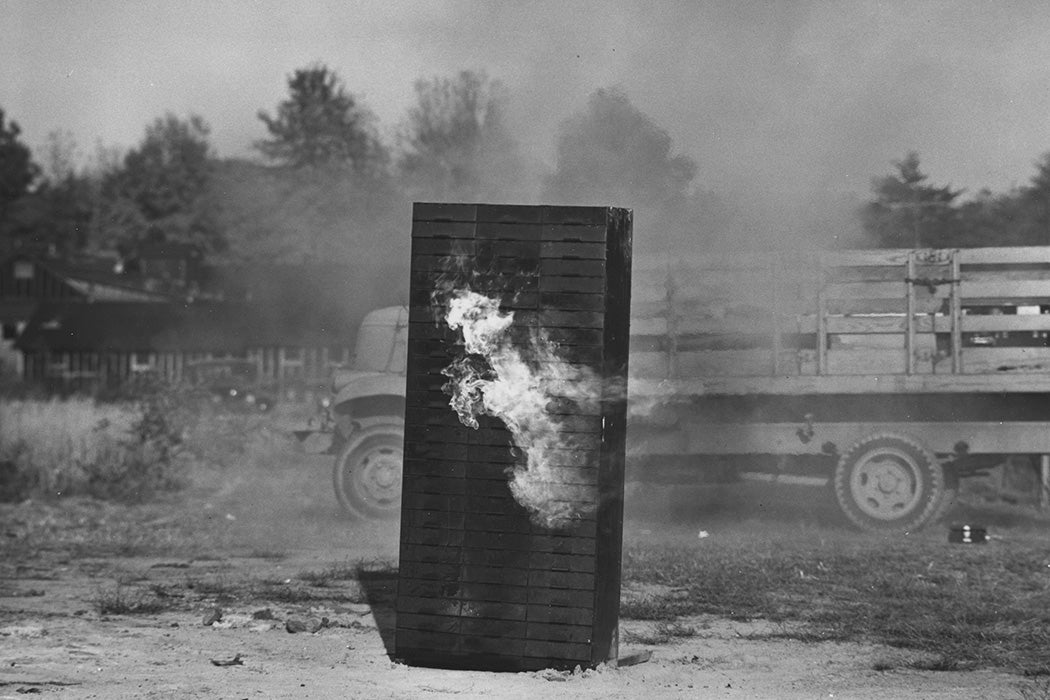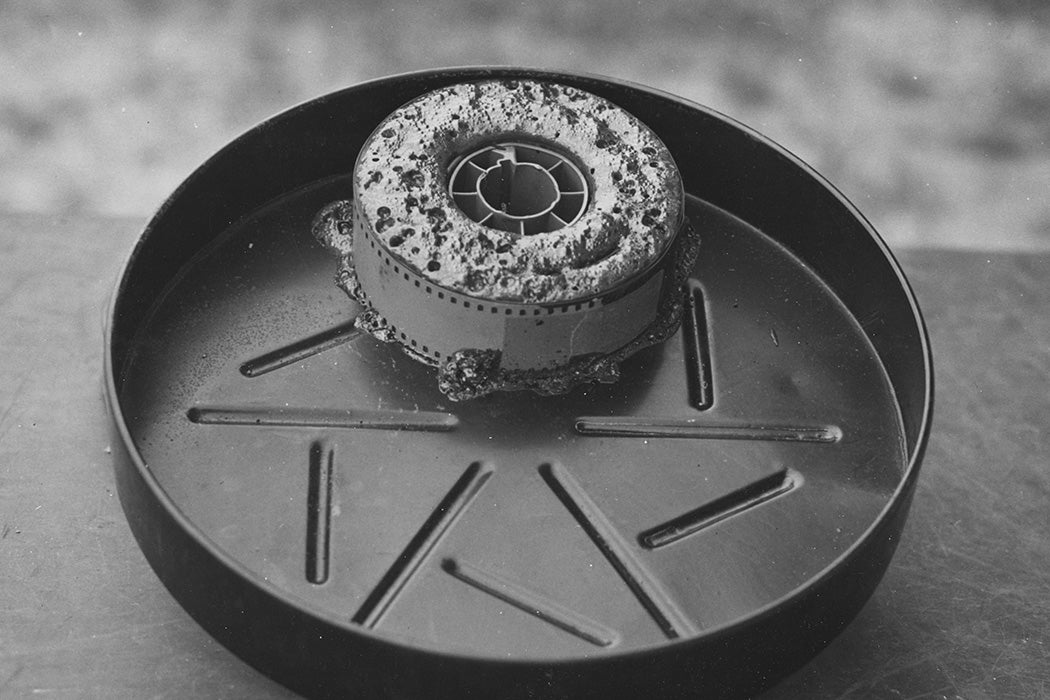For more than half a century, motion picture film was made from a substance once touted as an explosive. When plant cellulose—typically from cotton—is treated with nitric and sulfuric acids, it becomes cellulose nitrate, which is also known as guncotton. With six times the bang of standard gunpowder, guncotton was eyed as a replacement for gunpowder. But guncotton turned out to have too much bang: it was unstable, unpredictable, extraordinarily inflammable.
The addition of camphor and other chemicals turned guncotton into celluloid but did not neutralize the combustibility of the stuff. Nonetheless, celluloid became one of the first commercial plastics. It was used from the 1840s on to replicate more expensive material like ivory, shell, horn, exotic hardwoods, and rubber. Celluloid false teeth, dinnerware, billiard balls, and combs were typical household items—all of them surprisingly combustible.
By the end of the nineteenth century, thin strips of celluloid holding light-sensitive emulsions were running through cameras. This nitrate film, as it’s usually called, was used for about sixty years before production finally ceased, long after its potential weaknesses were known.
As archivist Heather Heckman writes, “if there’s one thing people known about nitrate film,” it’s that it burns.
“Nitrate film stock cannot be extinguished,” she explains. “It burns in the absence of oxygen, conveniently producing its own supply even when completely submerged under water. Once it starts burning, it releases explosive gases, which the burning films ignite.”
To say that it’s dangerous is itself a dangerous understatement. “Nitrate fires have taken at least five lives and destroyed literally millions of feet of our cinematic heritage,” writes Heckman. Nevertheless, even after “safety film,” made of cellulose acetate, was introduced in the 1930s, nitrate stock remained the film of choice for filmmakers. Its ability to produce “lustrous images” was one reason, but so was its durability.
“Until the 1950s, it clearly outperformed safety stocks in terms of tensile strength and resistance to shrinkage and warp,” Heckman writes.
Even though a lot of nitrate film has decayed to illegibility, crumbled to dust, or burnt up in spectacular fires, there’s still many millions of feet of it in archives around the world. So the preservation of nitrate film is an issue—but perhaps not as much of an issue as once thought. The late twentieth-century “Nitrate Won’t Wait” preservation campaign is now criticized by some archivists and scholars. For one thing, once nitrate prints were copied to other media—copying inevitably results in loss of information—the originals were destroyed.

Transferring nitrate to safety film stocks is expensive. Transferring to digital is also expensive—and who knows how long digital copies last? The Danish Film Institute “concluded that cold storage of nitrate originals is cheaper than digital preservation copying,” Heckman writes. The Library of Congress, George Eastman House, Academy Film Archive, and UCLA Film and Television Archive now favor “long-term preservation” rather than the copy-and-destroy policy once touted as being essential before it was too late. (Film preservation manuals, however, still often endorse copy-and-destroy as optimal.)
“Nitrate film stock is desperately in need of an advocacy campaign that emphasizes its assets rather that its liabilities,” Heckman writes, while noting that “we can reasonably presume that the majority of footage will remain in archival vaults for the long term.” Decomposition is “virtually negligible” in storage at 2°C and 20–30 percent relative humidity.
Weekly Newsletter
Heckman argues that there’s plenty of room for new research into nitrate film and for collaboration between chemists, archivists, and film scholars.
Of course, everything decays. It’s just a question of time. Safety film was designed so it wouldn’t erupt into flames, but it will break down into acetate, meaning vinegar. Today’s film stocks are petroleum-based polyesters, which are assumed to have a thousand-year lifespan at 20°C and 50 percent relative humidity, which may be a lot of assumption. Plastics are notorious for not biodegrading readily, but they do degrade chemically at high rates, resulting in, among other things, all the microplastic in animal bodies, including our own.
Meanwhile, the “digitization of everything” hasn’t nearly digitized everything by a long, long way, and the approach begs other questions of durability and access. We simply don’t know what will last as long as the so-far oldest, consistently accessible, mass-information storage system: the codex, or book.
Teaching Tips
Incorporate Primary Sources:
- Krystyna K. Matusiak and Tamara K. Johnston investigate nitrate negative collections at the American Geographical Society Library
- Bregt Lameris offers a historical overview of nitrate film preservation at the Nederlands Filmmuseum
- Ramesh Kumar discusses the early “scavenge and salvage” approach of the National Film Archive of India
- Justin McKinney documents the origins of the Museum of Modern Art Film Library







